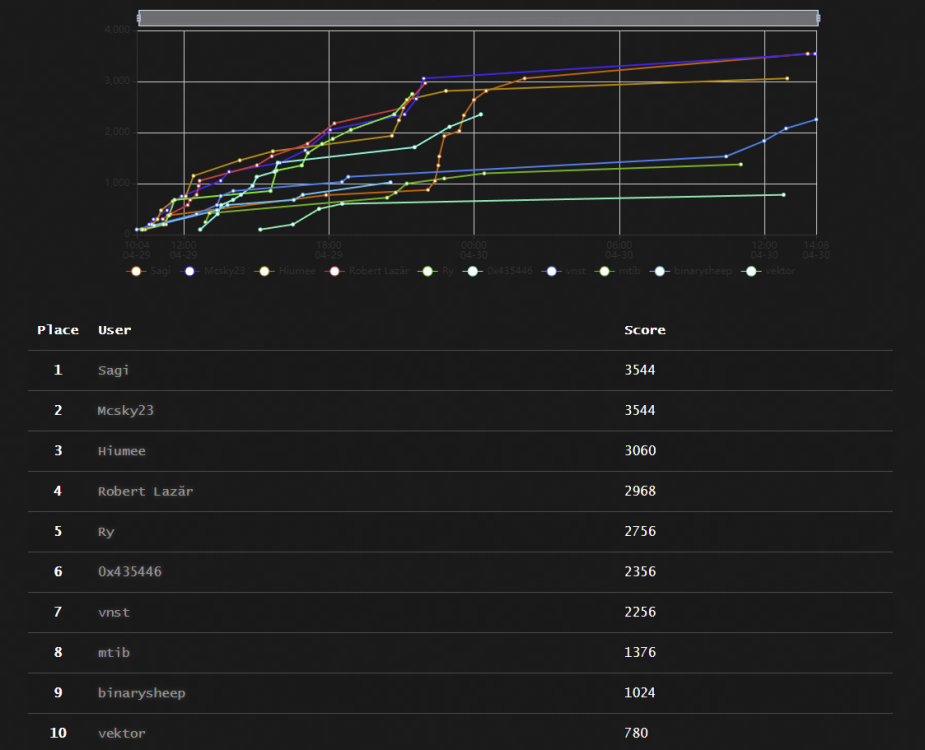-
Posts
18736 -
Joined
-
Last visited
-
Days Won
711
Everything posted by Nytro
-
In general packerele sunt folosite pentru executabile/binare, nu stiu dar ma astept sa fie solutii si pentru fisierele auxiliare precum harti si altele. Chiar nu am idee care si cum ar putea fi folosite, probabil gasesti documentatie pe site-urile lor oficiale sau pe Youtube (doar nu folosi solutii "cracked" sau care nu sunt de incredere ca ar putea fi backdoored). PS: Banuiesc ca e clar ca orice ai face, acele date vor putea fi recuperate. In functie de cat de complexa e solutia, cu atat mai mult dureaza acest proces, dar doar ar face munca unui "atacator" mai dificila.
-
Salut, daca nu stiu cum functioneaza dar banuiesc ca e cam asa: 1. Exista un server pe care tu il instalezi pe un server si doar tu ai acces la el 2. Exista un client, banuiesc cel oficial (ca nu ar avea sens altfel) pe care oamenii il instaleaza la ei pe PC si se conecteaza pe serverul tau Dat fiind faptul ca serverul de metin ruleaza pe un server unde doar tu ai acces, nu inteleg de ce ai avea nevoie sa fie packed. Si nici daca ar avea altii acces nu vad de ce, banuiesc ca e un server oficial si ca nu ai facut tu cine stie ce patch-uri prin el pe care nu vrei sa le ia altii...
-

Hello and sorry if i bother someone with this...
Nytro replied to NayKuL's topic in Reverse engineering & exploit development
Salut, nu imi dau seama ce incerci sa faci, sa faci protect cu Enigma si tot folosind Enigma sa adaugi licentiere pe acel binar? Nu pare nimic in neregula, nu am idee ce face exact Enigma. -

LockBit Ransomware Extorts $91 Million from U.S. Companies
Nytro replied to akkiliON's topic in Stiri securitate
Wtf? Chiar inca merge treaba asta cu ransomware? Chiar platesc firmele/oamenii? -
Nu mai posta coduri periculoase pe forum, te rog
-
Cred ca ideal ar fi sa fie decente si din punctul de vedere al calitatii, sa creasca numarul de clienti. Ca idei de promovare, ce ar merge? Instagram?
-
Ar fi practic ceva la care sa nu dureze 2 luni livrarea. Dar si pretul difera. Deci solutia e pe marketing su SEO.
-
Mai merge dropshipping-ul asta?
-

Atac cibernetic la distribuție energie electrica România.
Nytro replied to GabrielRo's topic in Stiri securitate
"cu privire la un atac cibernetic asupra infrastructurii SCADA" - Daca sunt atat de destepti sa lase SCADA accesibile de pe net isi merita soarta. -
Da, e mai practic sa te ajute persoana de la care ai cumparat decat sa gasesti tu vreun 2FA bypass...
-
01.03.2021 - We say "Happy anniversary" and ask for an update Nice
- 1 reply
-
- 1
-

-
Practic, nu prea. Teoretic da. Cauta despre atacuri pe SS7, gen Fake SS7 si altele. Poate doar daca lucrezi la operatori GSM si ai acces important pe acolo.
-
CTF writeups: https://hiumee.com/posts/RSTCON-3/
-
Learn everything from the course! It should be enough is some other skills are present (e.g. code review).
-
RSTCon #3 CTF s-a terminat! Felicitari castigatorilor si multumim tuturor pentru participare! Speram ca v-a placut si asteptam feedback-ul vostru la contact@rstcon.com sau prin PM. Castigatorii vor fi contactati pe email pentru oferirea premiilor. Ordinea e disponibila in scoreboard. Nu uitati ca cel mai bun write-up va fi premiat, asteptam write-up-urile voastre la contact@rstcon.com. Exercitiile vor mai ramane online 1-2 saptamani pentru cei dorinici sa isi imbunatateasca skill-urile. Intre timp, urmeaza Unbreakable si calificarile pentru RoCSC de unde se va forma echipa ce va reprezenta Romania. Speram sa ne vedem la anul si ne-ar ajuta putin ajutor cu exercitii de la voi!
-
Se pare ca merge OK: https://ctf.rstcon.com/scoreboard Pareri despre exercitii? PS: Atat s-o putut...
-
Playlist: https://www.youtube.com/playlist?list=PLTaLvwriPW8xBEH3mFrF7d4EB3IB7M8x1
-
- 1
-

-
Multumim celor care au participat la RSTCon #3! Concursul CTF incepe in cateva minute. https://ctf.rstcon.com/
-
O inceput: https://rstcon.com/
-
Pregatiti? La 10:00 incepe https://rstcon.com/




